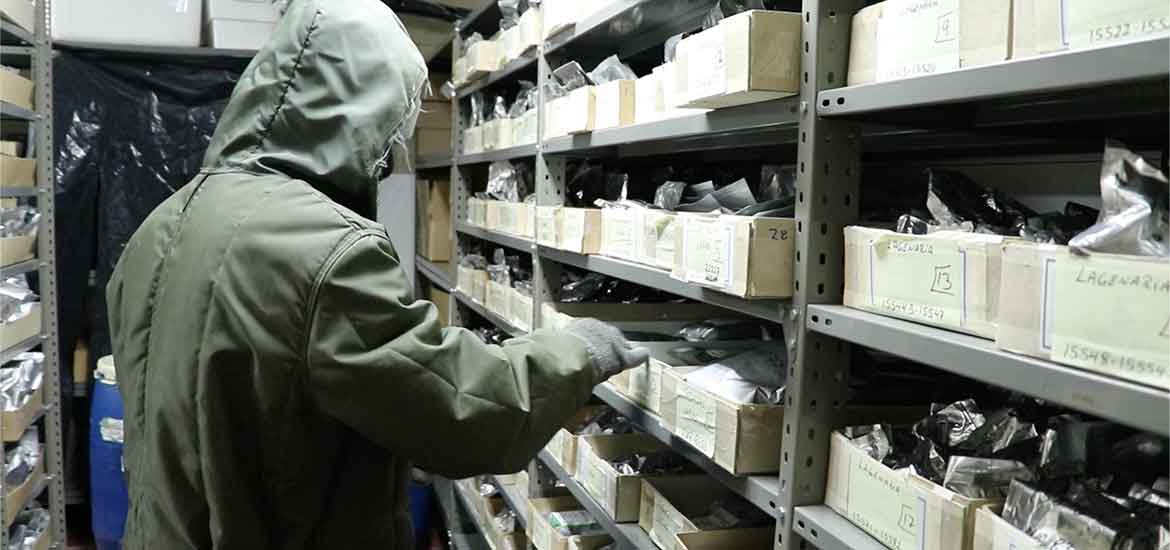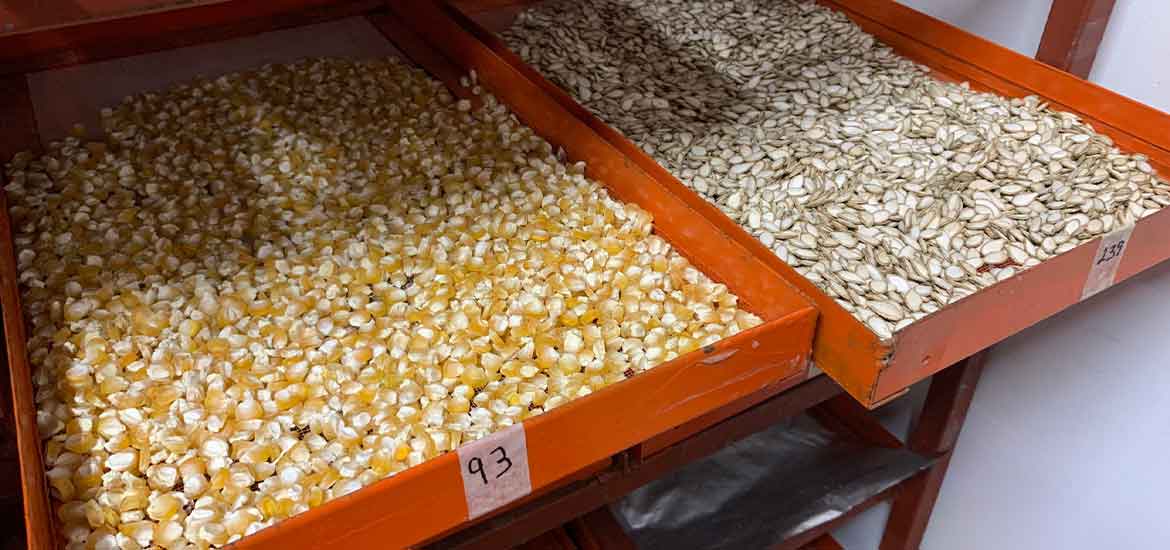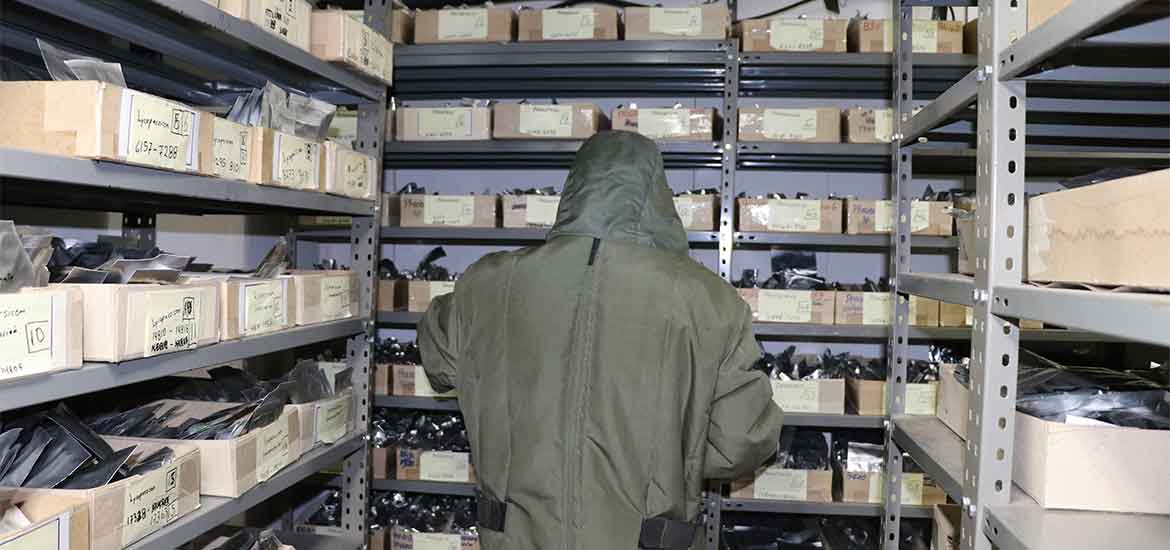Orthodox Seed Germplasm Bank



Background
CATIE's Orthodox Seed Germplasm Bank was established in July 1976 as a strategy to face the growing loss of diversity of some of the most important crops in the Mesoamerican region. One of the main tasks of the bank is to locate, collect, conserve, characterize and distribute the germplasm (seeds) of plants that, due to their attributes, are considered of priority interest to strengthen and ensure the food sovereignty of the region, in addition to providing oriented scientific knowledge to the optimization of the conservation of species of importance for food and agriculture.
Germplasm conservation
There are 6,201 accessions in conservation, representing 14 botanical families, 61 genera and 125 species. The most important collections are the Cucurbits (squash, zucchini, chiverre, pipián) with 2332 accessions from 16 countries, chili peppers (Capsicum spp.), with 884 accessions from 31 countries and tomatoes (Solanum lycopersicum), with 451 accessions from 21 countries. The Cucurbita collection is the second most important worldwide in terms of its quantity and the first in terms of the number of accessions available internationally. Many of the accessions are unique and are not represented in collections elsewhere.
The vast majority (90%) of the most important crops conserved are native materials that were collected on farms, markets, and roadsides, thanks to the visionary effort of various researchers over many years. The collections include accessions of native relatives of crops that - as is known - are an invaluable resource for future genetic improvement, by providing genes that can give resistance to new pests and diseases or, adaptation to new environments. For example, the tomato collection has 18% of the native species Lycopersicum pimpinellifolium.
On June 8, 2018, through a publication in La Gaceta, the Government of the Republic declared CATIE's long-term conservation of genetic resources of public interest (Executive Decree 002-2018-MAG).
Use in genetic improvement programs
Two thirds of the conserved materials have been characterized using international descriptors. This description has made it possible to know the main morphological features of each accession, such as plant height, size, color and shape of leaves, flowers, and fruits, as well as phenological aspects and in some cases, production characteristics and tolerance to pests and diseases.
The collections have been used and evaluated over the years inside and outside of Costa Rica. In a study of the impact of the germplasm distributed by CATIE during the 2003-2008 period (Girón, 2011), it was found that users were able to increase the yields of their crops and reduce the attack of pests and diseases. Likewise, an impact was achieved on the recovery of traditional corn and squash seeds in indigenous communities in the Talamanca area of Costa Rica.
Likewise, in recent research carried out in Costa Rica by organic and conventional farmers (Hethcote, 2016), morphoagronomic characterizations (Paredes, 2012) and participatory evaluations in greenhouse and open field in Honduras and Guatemala (Ortiz, 2016), it was shown that germplasm tomato, chili and squash preserved by CATIE not only have better organoleptic characteristics, but also greater resistance to pests and diseases than commercial varieties.
Researchers from the INTA of Costa Rica also evaluated 50 tomato accessions and found that some of these have resistance to viruses, Pseudomonas and Fusarium. In addition, they found that three have resistance to drought. Faced with imminent climatic changes, collections such as CATIE's can represent a very useful tool for the food and nutritional security of producers and families in the region.
All these findings have added value to the germplasm conserved at CATIE as a resource to commercially use some selected accessions and to carry out genetic improvement of existing materials and obtain improved varieties of high quality and resistant to pests, diseases and changing environments, which may help achieve a more resilient agriculture, both environmentally and economically.
Germplasm Distribution
All conserved accessions are attached to the International Treaty on Plant Genetic Resources for Food and Agriculture (ITPGRFA), therefore they are in the public domain. This means that any user can receive the germplasm that is conserve. More than 60% of the germplasm is available for immediate distribution.
To request germplasm, the accessibility process is as follows:
- Make a request via email to Daniel Fernández (dfernandez@catie.ac.cr) and indicate the purpose, contact information of the applicant and delivery address of the materials.
-
Accept the Standard Material Transfer Agreement (SMTA). You can choose one of three acceptance methods:
1. Fill in the appropriate information on pages 2 and 8 of the SMTA.
2. Approve the SMTA in advance and by opening the sealed bag and retaining the material received.
3. Accept the SMTA electronically on the website. - Send an import permit obtained from the competent Phytosanitary Authority of your country if this is required.
- Once these requirements are met, the genebank will process your request. From 50 to 400 seeds - depending on the species - could be sent either locally or outside the country. The shipping time can be between 1 and 4 weeks depending on the requested material.
Conservation support
The seeds are preserved in a cold room at -18 ° C, which represents a high operating cost. At CATIE we make an enormous effort by investing our own resources to maintain and make the conserved germplasm available to farmers, students, research centers and the community in general. If you want to support this effort, contact William Solano (wsolano@catie.ac.cr) to learn about the support plans and benefits for the donor.
Contact us:
Daniel Fernández
Responsible for the Orthodox Seed Bank
Tel. (506) 2558-2223
dfernandez@catie.ac.c
William Solano
Curator of the Orthodox Seed Bank
Tel. (506) 2558-2134
wsolano@catie.ac.cr
